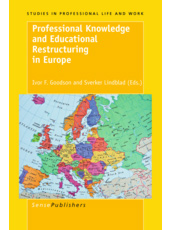Professional Knowledge and Educational Restructuring in Europe
Developing a Conceptual Framework for Understanding
CONCEPTUAL FRAMEWORK FOR UNDERSTANDING SYSTEM NARRATIVES
Restructuring as a World Movement
Our ProfKnow studies have employed Meyer’s concept of educational reform as ‘world movements’ embodying some of the features of more broadly-conceived social movements (Meyer, 1992).
This text deals with educational restructuring as a “world movement” and has the ambition to use this framing for furthering our understandings of the harmonisation of re-structuring policies and its relation to teacher’s professional knowledge in seven European Countries. Considering the complexity of social life our question is: how could the world movement argument qualify as a non-universal concept that gives space both to diversities and to dynamic change and transitions?
It is from this perspective, (with reference to Foss Lindblad, Zambeta & de Lima, 2007) that we will discuss the circulation of models, standards and ideas involved in educational restructuring from two alternative understandings of such flows of disseminated objects; by way of diffusion and by way of translation (see Serres, 1983; Latour 1990) and make use of some arguments about this distinction that we have borrowed from the actor-network theory horizon, as well as from the Scandinavian form of institutionalist theory. According to both models, each, flow will be in need of some mediator/s, a “something” that disseminates and embodies the flow and, also, have the power to interrupt a flow, make it stop, continue or make it non-working. The differences between the two models lie in how an eventual change in meaning, use or practices should be understood and what it is that decides the destiny of a flow (whether or not it will die or eventually grow strong). Additionally, the performative and active nature of translation, a phenomenon which also has been called imitation (Di Maggio and Powell; 1983) as well as hybridization (Boyer, 1996), stands in brief contrast to the possibility of a stable and unchangeable nature assumed for disseminated objects.
